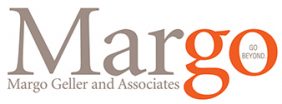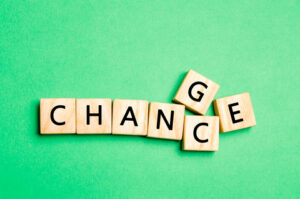Don’t just do something, sit there! – Dr. Edward Frost
Ever since a mid-day meal became a “power lunch” and a week off morphed into a “working vacation,” we seem frantically driven to pack more into every waking, and sometimes non-waking, moment. We eat breakfast over our computers and text message over lunch. We listen to tapes while sleeping and catnap while working. We exclaim, “There aren’t enough hours in a day!” and “How will I fit it all in?” In short, many of us fill our daily business with manic busy-ness and then pine for a way out, but fear and anxiety trap us in a spiral of escalating activity to be ever more successful.
The good news is yes, there is a way, but it’s not what most of us think. It’s not cramming even more in, nor training our brains to multi-task more efficiently. Instead, it’s nothing. More accurately, it’s a technique about nothing (to paraphrase “Seinfeld,”) that I call “Power of the Pause.” With it, I’m convinced we’re able to foster even more success than our default of always doing something.
As a business coach, I discovered the “Power of the Pause” while working with hard-driving entrepreneurs. These people wring their hands over feeling they should be doing more, especially when closing a sale. When a deal starts to languish, anxiety takes over and they do what they know best – i.e., more of what they did originally to interest the buyer. They cover benefits, handle objections, and reiterate value. In short, they talk… and talk… and talk some more, hoping they’ll convert the prospect, who can’t get a word in edgewise, into a paying customer.
It’s easy to jump into a client’s anxiety boat. After all, they feel discouraged because they have tried everything to attract more clients, build their business, and make sales. It feels natural to commiserate by sharing their fear and dejection, and then to help them feel better by offering support and encouragement. However, the more enthusiastic and rah-rah we become, the more we create noise in everyone’s mind, heighten anxiety, and reinforce the strategy of trying to force things to happen.
That’s where the pause comes in. It’s small, powerful, and takes only a moment. Simply center the body, relax the shoulders, take a few deep breaths, and say nothing… for a minute, maybe two. This is an eternity for some, but by letting stillness prevail, natural problem solving processes begin to flow.
If we replay the scene with the nervous entrepreneur about to lose a sale, the pause works two¬fold. First, when the client starts down path of doom and gloom, we as coaches need only shake our heads in acknowledgment of hearing, and say nothing. Simply let the concerns be voiced and then allowed to waft to the floor. It’s at this point the client can “hear” the words just spoken in full fidelity, undiluted by the usual tidal wave of sympathy. It’s in these moments where clarity of thought emerges, and solutions reveal themselves to the unguarded and receptive mind.
Second, the pause will work for the business owner’s interaction with a customer – for all the same reasons. When the customer starts to back-pedal and offer objections, this is a great time for the salesperson to sit back, breath, and allow a few beats of silence to fill the room. It stops the train of unbridled thinking, allowing real obstacles to be managed.
The pause works equally well in reverse, when needing to remove a client or customer who no longer is a good fit. Simply allow time to get ready, breath, and then initially review the positive aspects of the working relationship. Next comes the “scary” part. Gently convey that something you’re thinking (the negative prediction) may be upsetting. In reality, the client often feels fine and not surprised at all. Then, state what needs to be done – end the professional relationship – and stop. Do not say anything and give the client time to digest and reflect. After a response, take one more breath and reflect their feeling. “I see that you’re confused – or upset, ok, disappointed.” Then stop again, breathe, and get centered. Feel the confidence.
A key component to the pause is breath. In yoga, participants create openness in their bodies by intentionally “sending” breath to the places that are blocked and tight, thus releasing the tension and allowing energy to flow. The pause is like a mini yoga moment. By acknowledging the tension and then giving permission to pause, transformation occurs. Both parties reflect and make conscious, thoughtful decisions – not reactive, impulsive ones. The results are immediate and often astonishing.
If the pause is so effective, why is it not taught in sales courses and seminars? The answer, I believe, is our cultural role models push us to work hard and stop only when exhausted. Slowing down is seen as weakness, even laziness. While difficult to resist this cultural message, I challenge all of us to try. Americans are the world’s leading workaholics, with all the attendant dysfunction. Breaking the cycle can only help us. Harness the Power of the Pause – It will open the door for better decision-making and even greater success.




